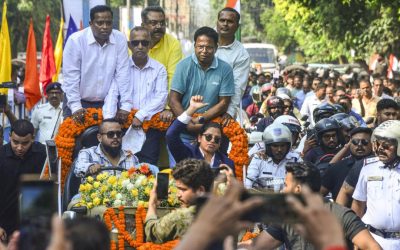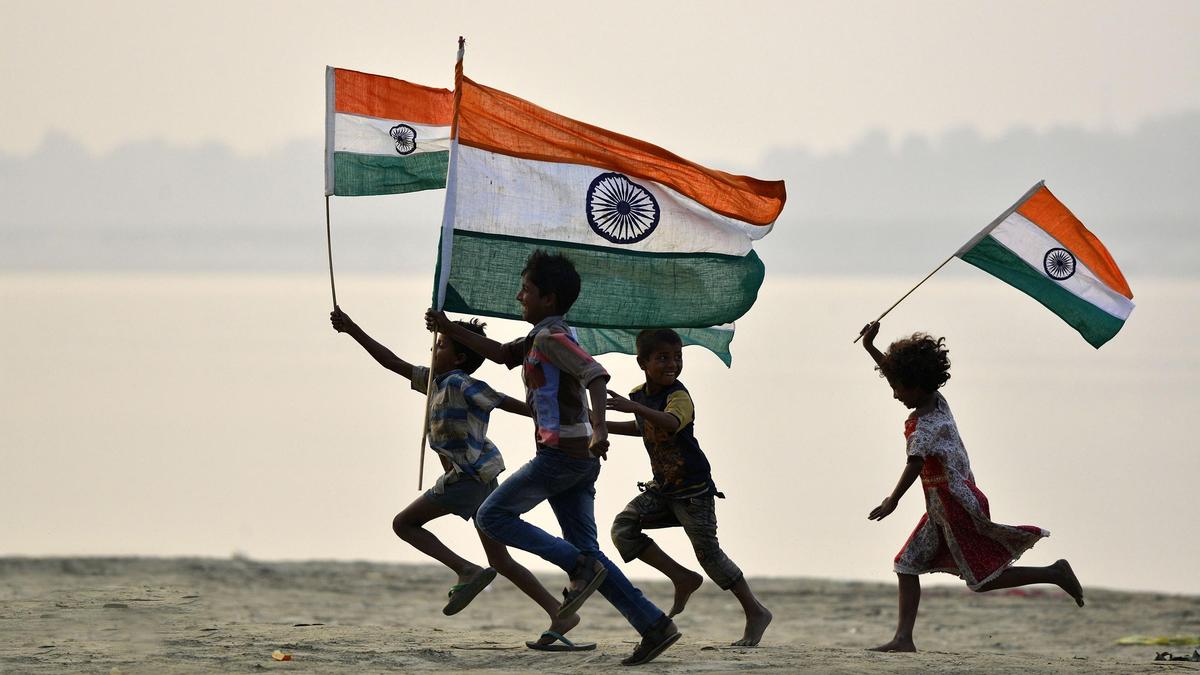Filmmaker Deepak Rauniyar on Nepal’s Gen Z ‘revolution’ and why his cinema is political
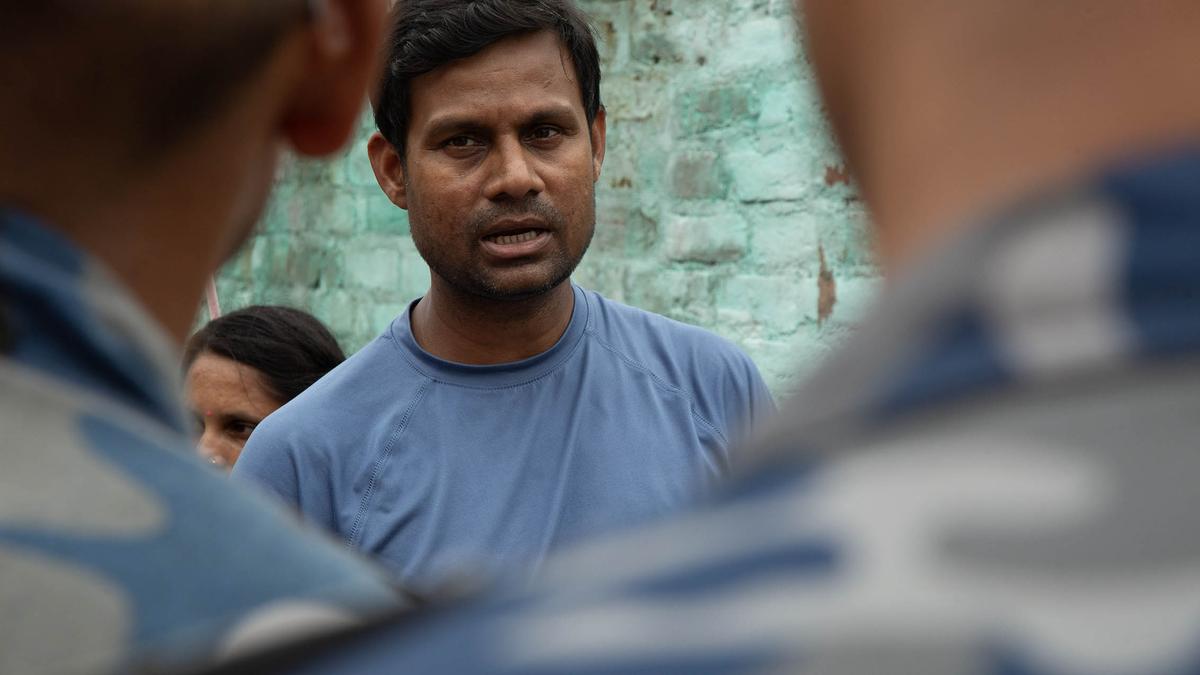
As thousands of Nepali youth — Gen Z (and the powerful extras) — captured government buildings in Kathmandu, assaulted the former prime minister and sitting foreign minister in their homes, and set ministries, court, and a media house on fire — smoke felt like a new sky, and someone wrote to me: “Gen Z’s protest felt like White Sun’s climax. While grown-ups fight, the kids carry the body to the river”.
My 2016 film White Sun — Venice’s Interfilm Award winner — is a story about a mountain path, a dead father and two sons from opposite sides of our war. Adults argue whether to take the body out a window or the door, carry it with a flag that represents the King or without, as two sons beat each other; elders refuse help from “lower castes”; police and rebels aim guns; the body lies there like a country nobody wants to claim. Till the children — quietly — drag the body to the river.

Children carrying a body to the river in a still from the Nepali film ‘White Sun’ (2016).
| Photo Credit:
Courtesy Deepak Rauniyar
I set it in 2015, when Kathmandu lit candles for a new Constitution while in the southern plains, where I am from, families lit pyres. On paper, we became secular, federal, democratic; in daily life, the ghost of the old order still slept in our rooms.
I should be happy now — with this Gen Z “revolution” and Nepal’s first woman prime minister. The photograph of her taking oath — one woman among men — looked like a frame from Pooja, Sir (Venice Film Festival 2024 premiere). My heart knows to celebrate; my head has questions.
Living through revolutions
I was born under autocracy, saw war and “revolutions”, and watched democracy get hijacked more than once. I am Madhesi. In Kathmandu, that often makes you “Indian”: to be stopped, questioned, laughed at, refused. The bullying began before I understood what my surname or skin colour announced.
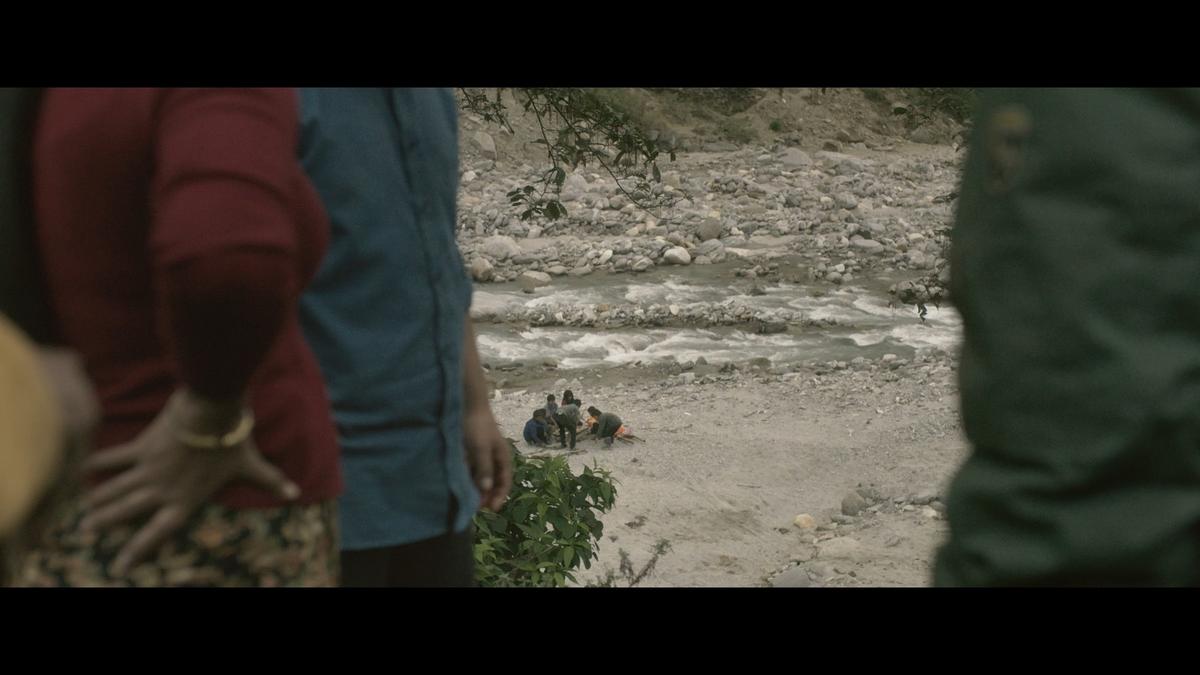
A still from ‘White Sun’.
| Photo Credit:
Courtesy Deepak Rauniyar
When I was growing up, every neighbourhood of ours had a small ‘king’ (an unofficial head who decided who walked free after a fight). One night, as I washed plates and a Brahmin mentee poured water, a kick sent me flying; and a drunk king chased the Brahmin boy through the village. That is the picture of “law and order” in my head.
I was 12 during the 1990 People’s Movement. I remember the small changes: no Sanskrit class, no ‘Long live the King’ anthems. But soon the same kings were re-elected village chiefs; people like my father — an orphan who carried sugar sacks across rivers — were beaten or jailed; the school still had no wall; progress felt far.
I went to college, wrote for a local paper, then national, then Radio Nepal. When I returned, the chief who once made my ribs ache invited me to dinner. That’s when I learnt the soft power of media.
Through the lens
Our cinema, however, made me angry. Our lives weren’t on screen; Madhesis were a joke. There was no film school, no connections. So, I wrote about cinema just to stand on the sets. Nabin Subba’s Numafung (2001) gave me my first film job; Tsering Rhitar Sherpa’s Karma (2006) became my film school. In those edits, I found Asha Magrati — my love and collaborator. We started Aadi Films and kept going.
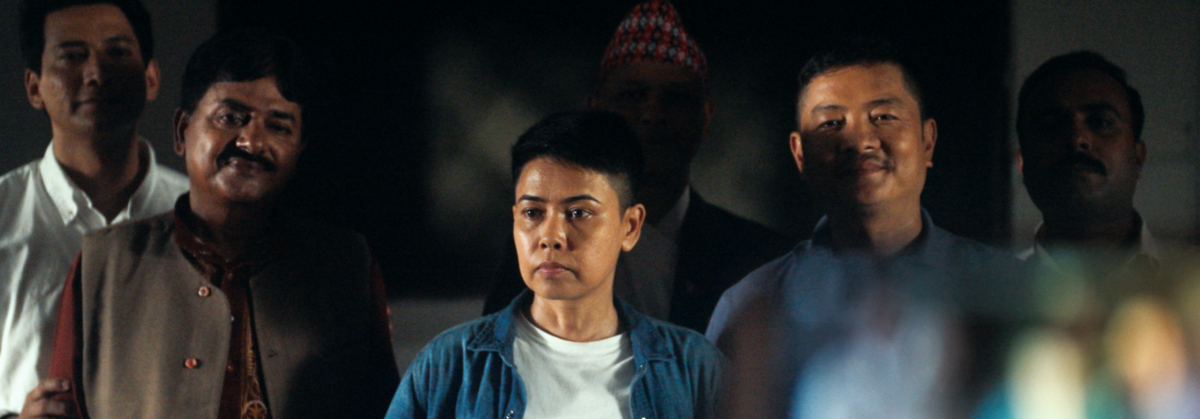
Asha Magrati (centre) in a still from the film ‘Pooja, Sir’ (2024).
| Photo Credit:
Courtesy Deepak Rauniyar
The civil war widened (1996-2006). The royal family was massacred. Dictatorship returned as King Gyanendra. I lost friends. Over 17,000 lives were lost in the war. Then came 2006. People rose. I filmed the revolution. On the surface, it looked civilian; on the frontlines, you could see Maoist cadres. Parliament returned. The crown left the palace.
We felt like winners: a secular, federal, democratic republic — at least, on paper. A Madhesi (ceremonial) president. The Maoists won. But, as White Sun shows, change born under guns invites pushback. Not everyone was pleased. Across the border, political voices such as Yogi Adityanath’s asked to bring the king back.
In Janakpur, while filming Pooja, Sir, I saw things I couldn’t unsee: saffron flags, boys drilled like cadets, police trying to stop Hindu-Muslim clashes, journalists scared or disinterested. Philosopher Frantz Fanon wrote: “the colonised dream of taking the colonist’s place”. I saw it at home. Leaders who toppled the monarchy began playing king.
Censoring voices
My three features since 2012 — Highway, White Sun, Pooja, Sir — are a post-war trilogy. From my first short, Chaukaith (2008), I’ve faced heavy censorship. For Pooja, Sir, we got 19 cuts: pull an archival clip of K.P. Sharma Oli, mute the “prime” in prime minister, avoid Hindi and “India”. Black frames where memory should be — that’s violence, too.

Posters of the films that make up Deepak Rauniyar’s post-war trilogy: ‘Highway’, ‘White Sun’ and ‘ Pooja, Sir’, made in the last two decades.
| Photo Credit:
Courtesy IMDB
So when Gen Z protests began — against a social-media ban and corruption — I wasn’t surprised. Then, the morning of September 8 shook me. Dozens killed by police firing. The city burnt: courts, homes, a media office swallowed by smoke. A flood of claims followed — late-night meetings at army headquarters, a televised address before a royal portrait, talk that the presidency came under pressure, and reports that leadership and dissolution decisions emerged from closed rooms. Images showed a controversial royalist alongside the army chief; some Gen-Z figures said they boycotted talks; others said they were bypassed.
A city of lights
I’ve seen 10 years of war and months of protests in the plains — hundreds of thousands in the streets — and nothing moved. Now, a small, mostly unarmed crowd overturned so much so quickly? If intervention was coming, why so late? Why was so much already broken — especially with regiments posted on those government grounds? Where was the chain of command? Who gave which orders? When so many young lives were lost in the centre of Kathmandu — violence we’d learnt to expect along the plains’ long roads, not on the capital’s doorstep — the questions deepened. An army leaflet swept across our phones; to many it explained timing, not responsibility.
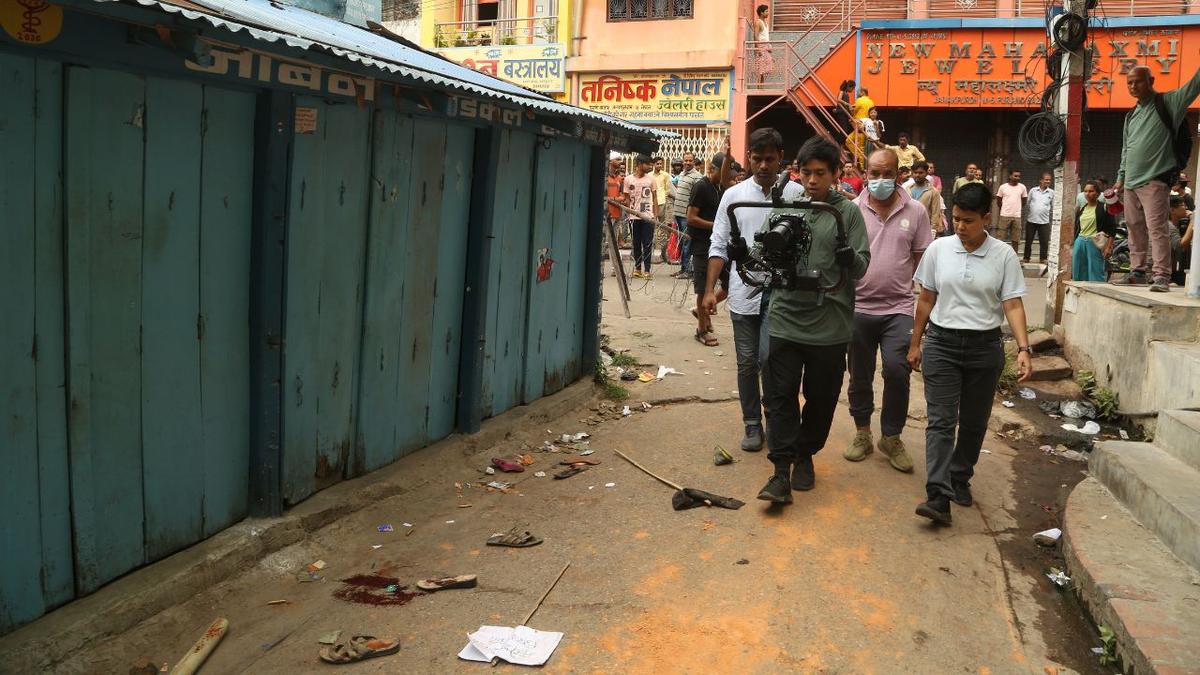
A behind-the-scenes shot of the filming of ‘Pooja, Sir’.
| Photo Credit:
Courtesy Deepak Rauniyar
Perhaps, a silver lining: without this rupture, we might have waited decades for a woman to hold the post of prime minister. We seek a State that understands dissent is love with a rough accent, and for our children — Pahadi, Madhesi, Janajati, Dalit — to walk to school without fear. I make films as small torches. I want a city of lights.
If the children in White Sun dragged the body to the river, maybe Gen Z lit the pyre. Now comes the smoke in our eyes, the ache in our chests, the knowing that something has ended, and the fear it will be reborn. Can we let the old ghost go? May the reel stay real this time?
The writer is a Nepali filmmaker and Associate Professor of Practice at Boston University.
